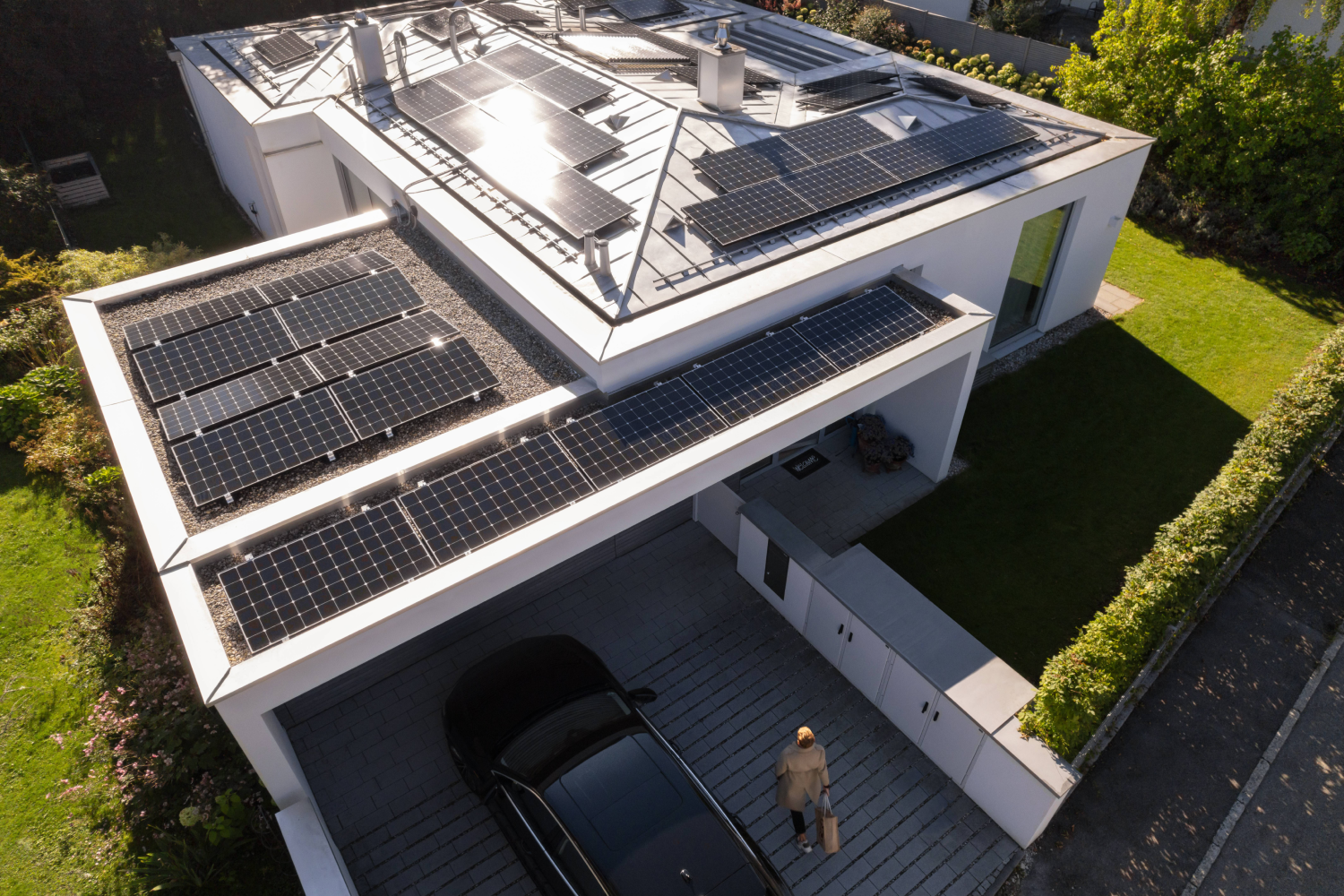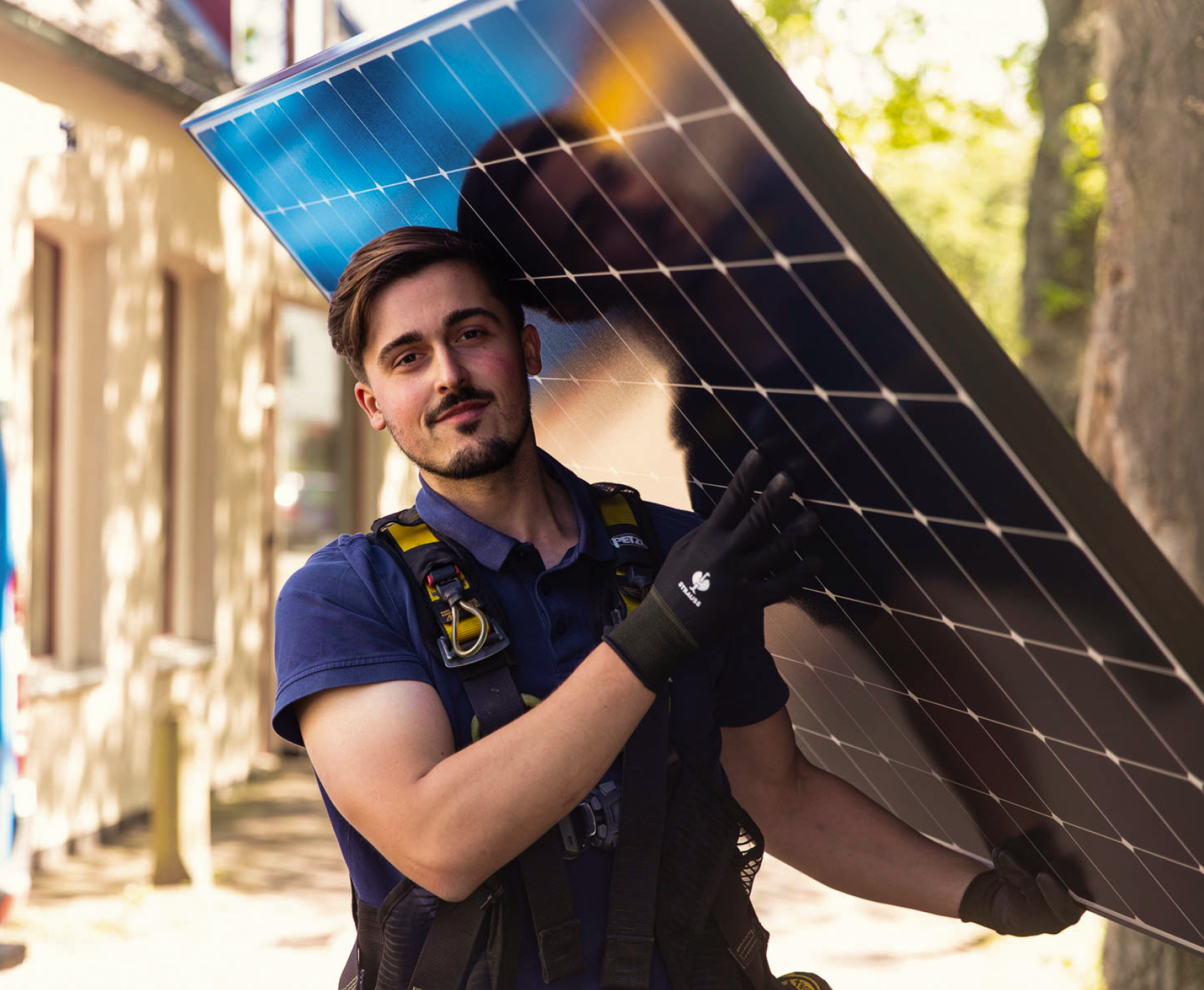
That said… there are certainly many situations where panels experience shading, such as early in the morning or late in the evening, or during the winter months. Sometimes there’s simply a chimney in the way, or the neighbour’s tree grows faster than expected. And sometimes, it’s aesthetically better to place a neat row of panels on a roof, even if one or two are occasionally shaded by the neighbouring house. Is this really such a major issue?
Indeed, it is not a major issue. However, it is important to consider what we can do to prevent yield loss and damage. Therefore, we will delve further into the effects of shade on panels and the choice of inverters.
To gain a clear understanding of the effects of shading on solar panels, we first need to understand how the panels are constructed from cells and what role the bypass diodes play.
The panels are equipped with bypass diodes that can reroute the current if a cell fails. However, when solar cells are shaded, a unique situation arises. A shaded cell isn’t broken, but it doesn’t work as effectively as the adjacent cells that are in the sun. Therefore, some current can flow through the shaded cell, but certainly not as much as through the other cells. In such cases, does the current pass through the cell or is it rerouted via the bypass diode?
The answer is: it can be either, depending on how many cells are shaded. The inverter also plays a significant role. Suppose there is only one cell in the shade (perhaps a leaf from a tree has fallen on it) while all other cells are in the sun. In this case, the current forces its way through the shaded cell. Although the shaded cell cannot pass much current, it is compelled by the others. What happens then is that the shaded cell allows the current to pass through but begins to absorb energy instead of producing it. The energy absorbed by the cell is emitted as heat; the cell becomes much hotter than the other cells. This phenomenon is known as a ‘hotspot’.
When multiple cells are shaded, the current has two options: In one case, it can flow through all these cells, but since some are shaded and thus pass less current, it becomes a mere trickle. The shaded cells dictate how much current flows, which affects the cells in the sun that could otherwise produce much more.
In the other case, the current bypasses the shaded portion and uses the bypass diode route. This prevents the current from being ‘restricted’ by the shaded cells, maintaining a much higher yield. This is the more desirable situation, but how can we achieve it?
The answer varies depending on the situation. Ultimately, it comes down to: How much does it cost to install an optimiser, and how much additional yield does it provide? Some systems with optimisers, such as those from market leader SolarEdge, only work if optimisers are installed behind all panels, regardless of whether they are shaded or not. This can impact the price and may make the system more prone to faults (as there are more components). At the same time, the additional yield from optimisers might not justify the cost; if it’s just a few small shaded areas in the morning and/or evening, when the sun is already weak, the investment in optimisers might not be warranted.
Whether an inverter handles shading effectively depends on the software used for the MPP tracker. All current inverters from SMA are equipped with ‘OptiTrac Global Peak’, which ensures that shaded (parts of) panels are bypassed in the presence of shadow. Some other inverter brands have similar systems, but many do not. Therefore, be sure to pay close attention when selecting an inverter!
Another way to counteract the negative effects of shading is to use optimisers. An optimiser is a small device that is installed behind a panel (i.e., on the roof) and directly connected to it. The optimiser is then connected to the string, which eventually leads to the inverter. The optimiser manages MPP tracking at the panel level: This means that a panel in the shade can still contribute to the system’s yield.
The key difference between using optimisers and using smart software like OptiTrac Global Peak is that with optimisers, the shaded panel still contributes somewhat, whereas with OptiTrac Global Peak, the shaded portion is bypassed. The question is: Is it worthwhile to install an optimiser for shading, or is using OptiTrac Global Peak sufficient?
The answer varies depending on the situation. Ultimately, it comes down to: How much does it cost to install an optimiser, and how much additional yield does it provide? Some systems with optimisers, such as those from market leader SolarEdge, only work if optimisers are installed behind all panels, regardless of whether they are shaded or not. This can impact the price and may make the system more prone to faults (as there are more components). At the same time, the additional yield from optimisers might not justify the cost; if it’s just a few small shaded areas in the morning and/or evening, when the sun is already weak, the investment in optimisers might not be warranted.
SMA now also offers optimisers, but with a slightly different approach. With SMA, a customer can choose to equip only those panels affected by shading with optimisers, while leaving the rest in the string.
As a guideline, SMA provides the following indication: A solar panel system where 20% of the panels are shaded 20% of the time would yield 5% more with OptiTrac Global Peak than without. If the system were equipped with optimisers, it would yield 9% more than without. The difference between these two is therefore only 4%. Note: This applies to a system with morning or evening shading. For a system with significant shading during midday, optimisers will likely perform much better. For shading that moves across many panels throughout the day, a SolarEdge system is often a good choice.
What’s best for your system depends on various factors: your roof, the type and timing of shading, whether you are aiming for maximum yield or the best cost-benefit ratio, etc. Since determining the best option can be challenging, we always recommend having one of our advisors visit; they provide a free consultation and can give advice tailored to your specific situation.
Contact us

Get a free roof scan!
The roof scan is only available for homeowners.
Copyright – SolarCircle
Binnen 2 minuten afgerond!
Doorloop de stappen en ontdek wat jouw dak op kan leveren met de zonnepanelen van Solar Circle!
Laten we verder gaan
Laten we verder gaan
De resultaten staan voor je klaar. Benieuwd naar wat zonnepanelen jou opleveren? Vul onderstaande gegevens in om je aanvraag af te ronden.
Resultaat
We nemen spoedig mogelijk contact met je op!
Completed in 2 minutes!
Follow the steps and discover what your roof can generate with SolarCircle’s solar panels!
Let’s move on
Let’s move on
The results are ready for you. Curious about what solar panels can deliver for you? Fill in the details below to complete your request.
Result
We will contact you as soon as possible!